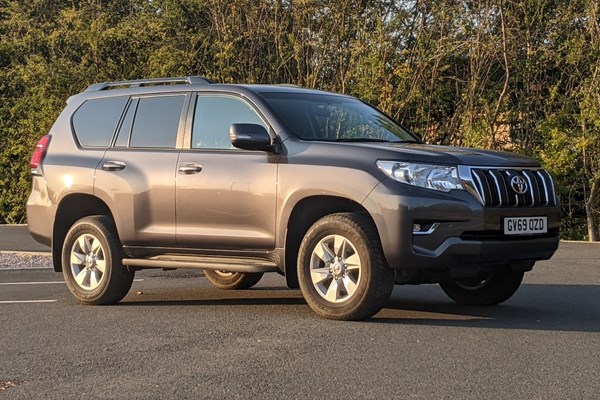Toyota Land Cruiser Commercial 4x4 review (2023)
It's conquered war zones and deserts. Britain is easy
PROS
- Excellent reliability
- Proven off-road ability
- Worldwide support
- Surprisingly comfortable
- Quicker than a standard Hilux
CONS
- Single engine option
- Restricted load space
- Low payload
- Hilux tows more
- Base model doesn't have much kit
Summary
The Toyota Land Cruiser Commercial is the van version of one of the toughest, best-known off-roaders in the world - the iconic Toyota Land Cruiser SUV.
Rival to the likes of the Land Rover Discovery and Defender van models, this is an extremely accomplished commercial 4x4. Our 2023 Toyota Land Cruiser Commercial review will take you through all the pros and cons. If you were looking for the car version see our Toyota Land Cruiser review.
What is the Toyota Land Cruiser Commercial?
Launched in 2018 in basic Utility specification, with a better-equipped Active model joining the range in early 2020, the Land Cruiser Commercial is available as a short-wheelbase (SWB) three-door model and a long-wheelbase (LWB) five-door model.
Both variants have the rear seats permanently removed and a load area installed, and come with a hugely capable four-wheel drive system.
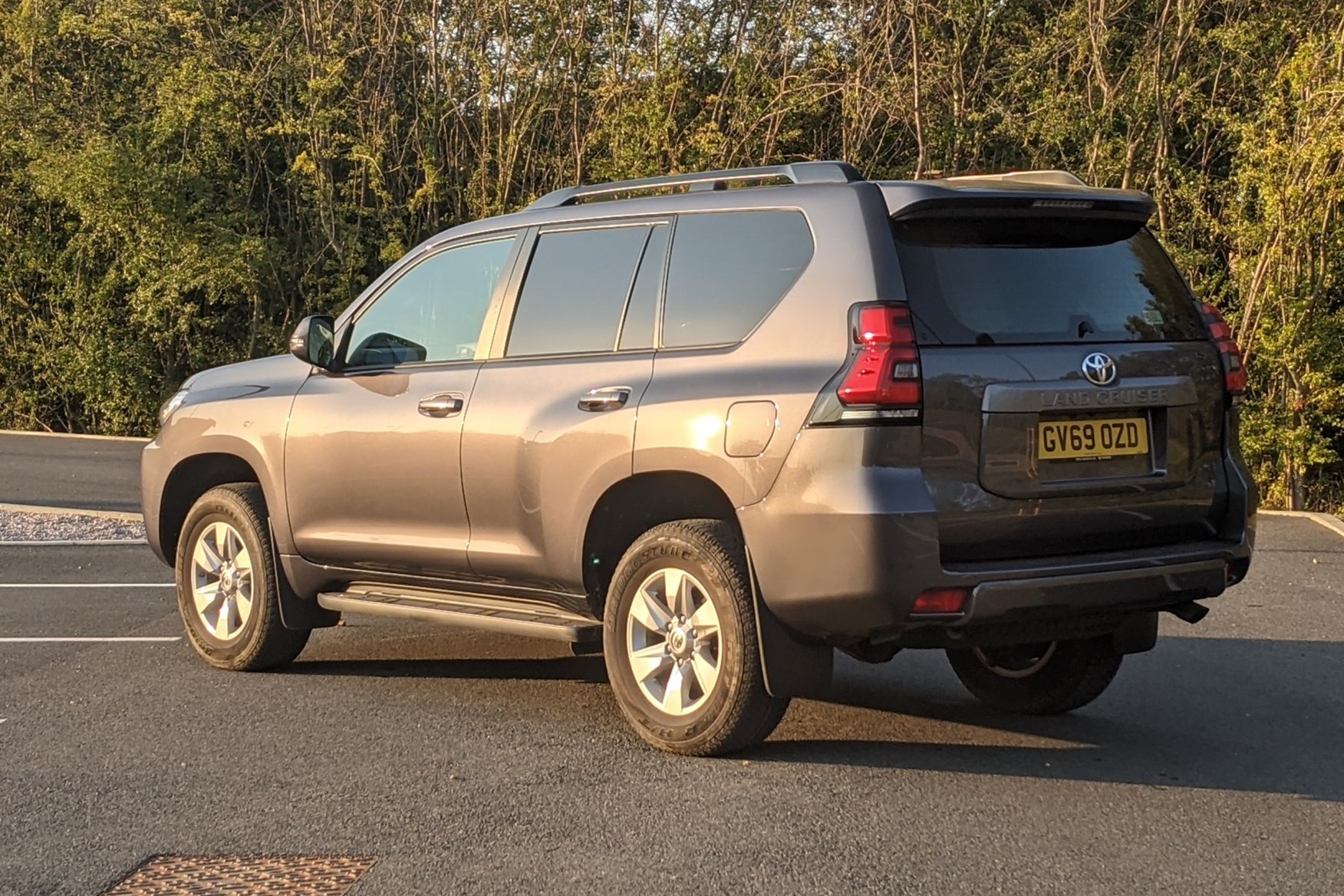
With an acceptably road-car-esque appearance, this Land Cruiser could be just the thing for buyers after a hard-as-nails light commercial vehicle (LCV) that doesn't look like a van.
A great driving experience and plenty of power means it also makes a tantalising pickup alternative as well. Though as with all commercial 4x4s, payload isn't particularly high compared with purpose-built load-haulers.
Toyota Land Cruiser Commercial rivals
The Land Cruiser Commercial's closest rivals come from Land Rover, which sells the Discovery Commercial and Defender Hard Top commercial vehicles. Both are much more plush inside than the Toyota, and both will give it a run for its money over tricky off-road terrain. They do also cost more, however.
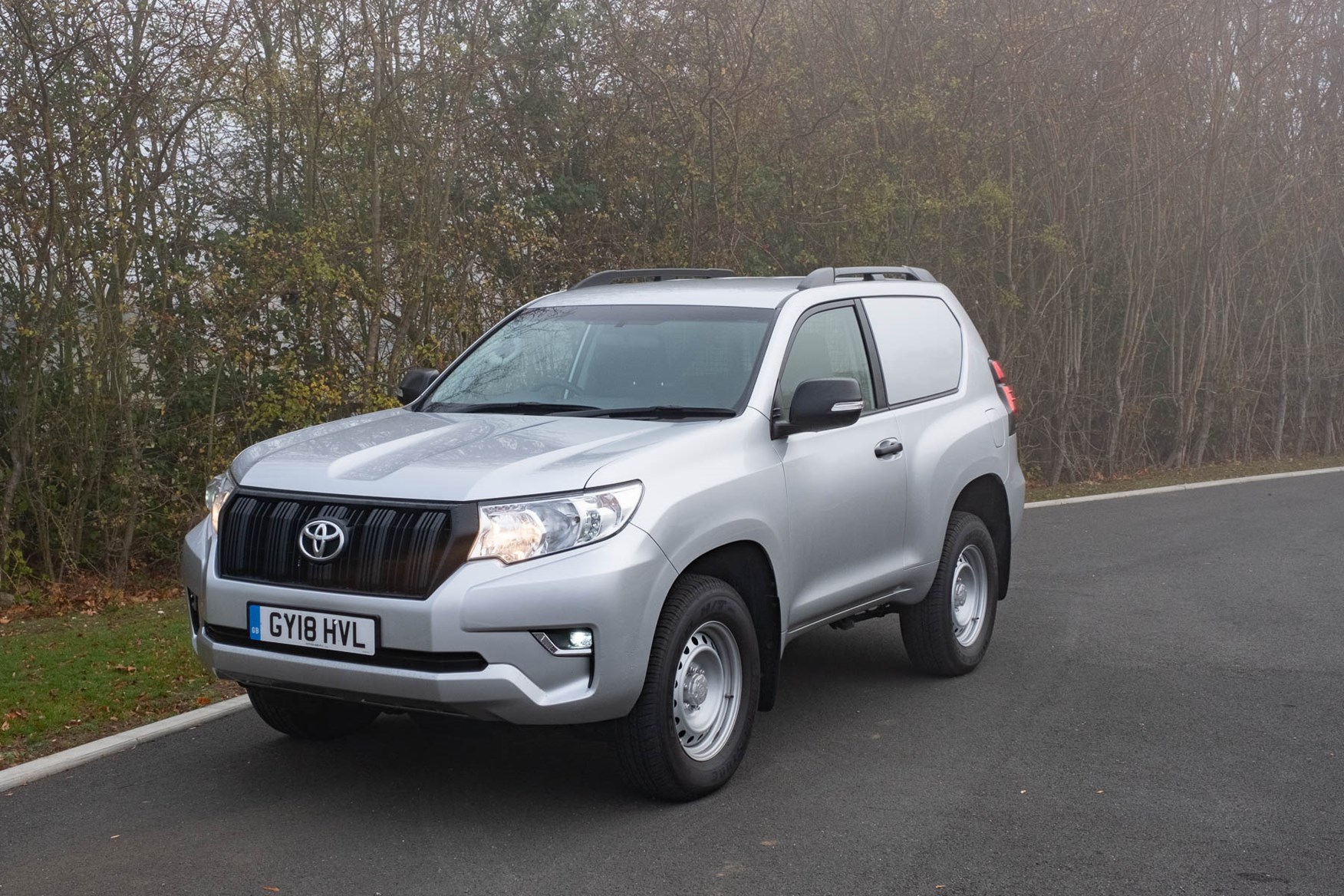
The Toyota's long wheelbase model provides better refinement, ride quality and handling than most 4x4 pickups with hard tops in a similar budget. However, it can't compete for carrying heavy loads or towing, and lifestyle buyers may be disappointed when they realise the 'commercial' bit of the name means the Land Cruiser only has two seats. Double Cab pickups can carry five.
>> The best pickups you can buy in the UK
Land Cruiser Commercial – one engine, two body sizes
For the British market, whether you pick the long or short version, the Land Cruiser Commercial was initially fitted with a 2.8-litre D-4D four-cylinder turbodiesel, producing 177hp and 420Nm.
Performance is probably not high up on buyers' requirements, but with this large diesel and six-speed manual gearbox, the Land Cruiser can sprint 0-62mph in 12.1 seconds - and feels faster. Top speed is 108mph. That's plenty.

In September 2020, a newer 2.8-litre D-4D was announced, boosting power to 204hp and torque to 500Nm.
Why buy a Toyota Land Cruiser Commercial?
It's all about the tax, essentially. If your business or industry suits reclaiming VAT, a fixed-rate of BIK and relatively generous fuel allowances, and you never need rear seats, then you'll save a healthy amount over the total ownership of the commercial over the civilian Land Cruiser Utility. The actual saving for the loss of the rear seats if you can't reclaim tax is minimal, and resale will be trickier too.
At launch. unlike the Mitsbishi and Land Rover rivals, there was no unusually generous or luxurious specification to create a luxury van – this is a replacement for traditional 4x4 car-derived vans like the Land Rover Defender.
The new Active trim level goes someway towards addressing this issue, but you still shouldn't be expecting an off-road limo here.
Verdict: is the Toyota Land Cruiser Commercial any good?
It's easy to look at the crudity of the Land Cruiser Commercial and expect a second-world driving experience; particularly when the cost is so reasonable. Far from it – the only real difference between this and regular Land Cruisers is additional technology and trim in the 'passenger' models, meaning the Commercial rides and handles well enough to keep buyers of a premium SUV happy, let alone those looking for a tough van or pickup alternative.
The Land Cruiser Commercial is, therefore, verging on the brilliant – robust underneath, comfortable without complexity, and deeply satisfying to drive for the class of vehicle. The sense of uncompromised engineering couldn't be clearer. Anyone replacing an aging Defender with one of these will think they've won the lottery.
Skip to our full verdict on...
- Only one engine - but it's powerful and torquey
- Precise steering and well-judged suspension
- Outstanding off-road capability
One of the larger four-cylinder engines on sale now, and naturally a diesel, the Land Cruiser's 2.8-litre D-4D is the only option offered to UK Commercial buyers.
Here we detail the performance of the original 177hp model - and will update this with info on the 204hp version once we've had a chance to test this. Needless to say, we expect it be as good as the below, but with even more oomph.
Toyota Land Cruiser Commercial engine details
On models sold in the UK before 2021, the Land Cruiser Commercial features a four-cylinder, 16-valve DOHC layout is fed via a variable geometry turbocharger and has a relatively low compression ratio, trading maximum potential power for low stress and tolerance of low-quality fuel.
Tuned for economy and reliability it achieves 177hp and 420Nm with just 203g/km emissions when installed in the 2.0-tonne Land Cruiser Commercial.

It doesn't sound like a great deal of power, particularly given the Land Cruiser's heavyweight protection underneath (no plastic trims to be found here, the engine guards are strong metal) and permanent all-wheel drive.
Yet the standard six-speed manual gearbox provides decently spaced ratios to make the best of peak torque, and the SWB in particular feels quicker than the 12.1-second official 0-62mph time suggests.
Don't mistake the three pedals and long, tough rubberised gearlever for crudity, either. Toyota has weighted the controls brilliantly, with a light, progressive clutch and long, easy throw on the stick.
Models in Active trim come as standard with a six-speed automatic gearbox instead. Less satisfying than the manual but probably a more sensible option for most drivers, it’s smooth enough and makes the most of the engine’s vast torque reserves.
Cruise control is standard, too, which makes taking advantage of the tall sixth gear for motorways is fairly stress-free; it's a little stalk on the wheel rather than buttons, so intuitive to add or subtract speed.
What is the Toyota Land Cruiser Commercial like to drive?
There are no sports pretentions to the Land Cruiser Commercial, so expecting a lot of feedback or precision from the steering would be unfair. For the class of vehicle, though, it's excellent.
Despite long travel, flexible articulation independent front suspension, the front end feels tight and well-damped, with none of the fidgety slack that often accompanies such heavy-duty setups.
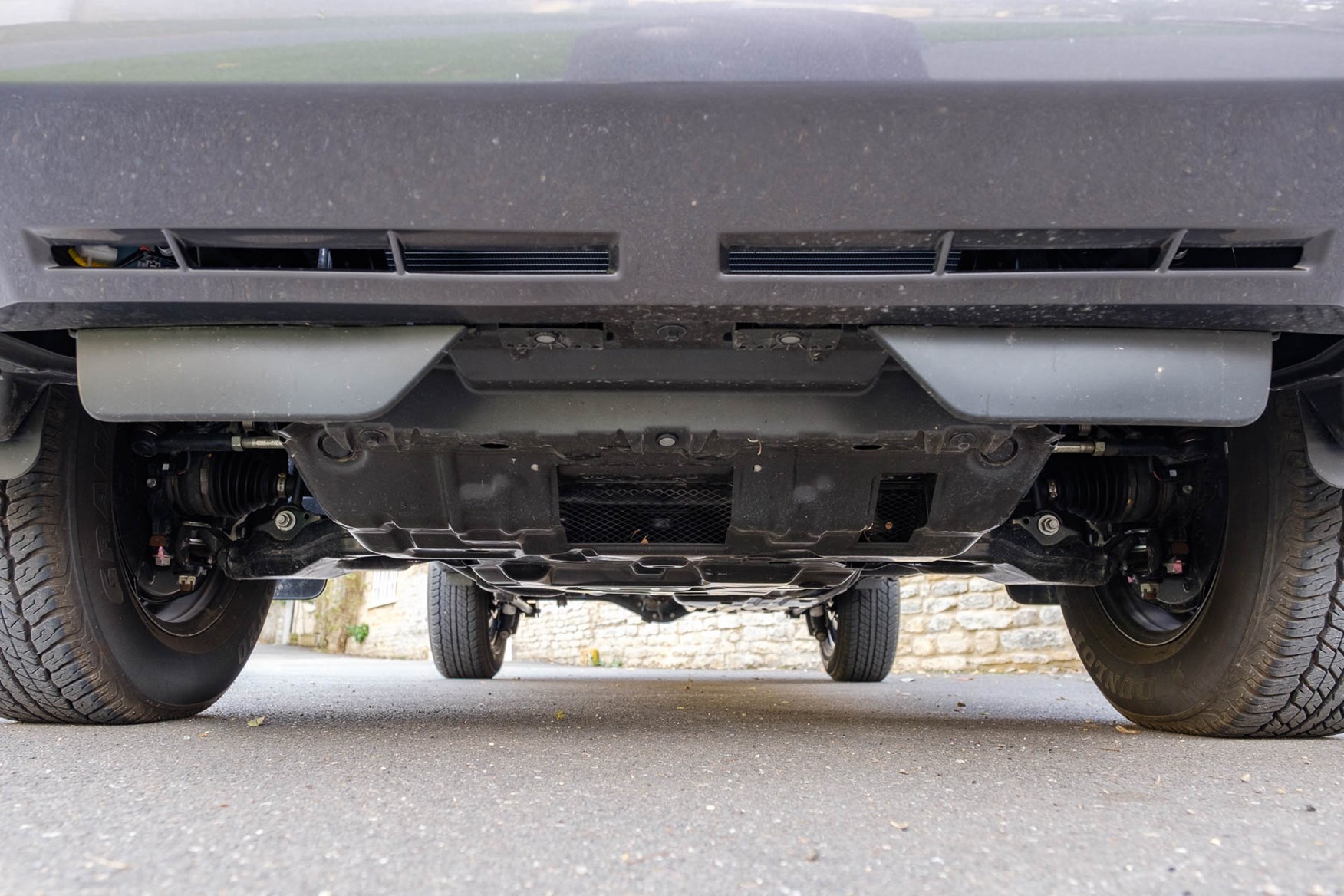
There's a feeling of quality engineering for the intended purpose, rather than trying to mask the mass of components needed for the Land Cruiser's ability to function in rugged environments.
Is the Toyota Land Cruiser Commercial comfortable?
Feedback is sparse on smooth roads, suggesting that at speed on rough surfaces, the driver will be insulated from the worst shocks. High profile, soft tyres help too, and the ride quality of the LWB Land Cruiser in particular is impressive. Braking, too, is powerful yet considered, and easy to modulate – essential for off-road control.
Given the number of roads in Britain, most Land Cruisers will spend a lot of time on tarmac even if their ultimate destination is a building site, remote mountain or farm. Here the LWB really shines – able to comfortably remain at the legal limit safely without undue stress for the driver, it's also surprisingly settled on poor tarmac.
The SWB model lacks composure by comparison, pitching a little on speed bumps and turning with an eagerness that, combined with bodyroll, can make it feel a little twitchy in the wet. Although this also makes it feel very nimble, causing some of our writers to describe it as the 'sports car' of commercial 4x4s.
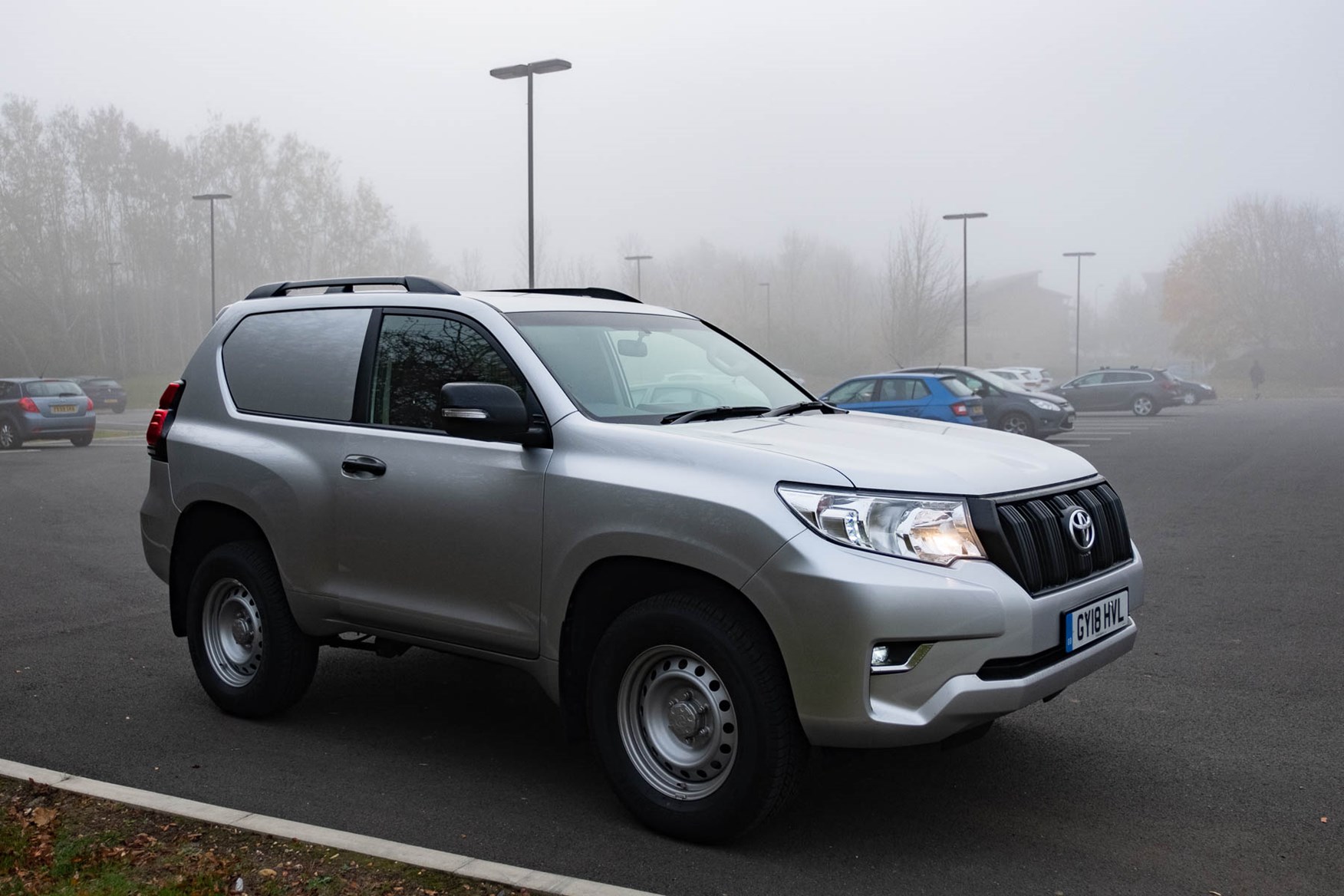
Regardless of body length, the presence of full-time four-wheel drive is welcome on- and off-road, and driver controls are simple – you can engage a low-range gearbox, and you can lock the centre differential if there's insufficient traction.
Land Cruiser Commercial off-road specification:
- Approach angle: 31 degrees
- Departure angle: 26 degrees SWB, 25 degrees LWB
- Breakover angle: 22 degrees
- Ground clearance: 205mm SWB, 215mm LWB
- Climbing angle: 42 degrees
- Side angle / rollover limit: 42 degrees
- Wading depth: 700mm
A feeling of wellbeing in the Land Cruiser
Combining all the Land Cruiser's traits results in a wonderfully confidence-inspiring, calming vehicle to drive. Everything is so well made, all the controls need a light, but firm touch, and the engine just feels relentlessly capable – unstoppable even. Which if you're heading to a forgotten Welsh hillside to repair some power cables or tend to livestock, is exactly what you need.
- Very basic inside but very well put together
- Sensible control layout, but Utility model lacks kit
- Active model adds more bells and whistles
Toyota does offer a luxury version of the Land Cruiser. This is not it.
In models that are available, however, everything is the same in the Commercial versions as it is in the passenger variants.
Toyota offers two trim levels – Utility, which is as basic as vehicle interiors come these days, and Active, which is still far from luxurious but does gain a few nods towards comfort.
Regardless of trim, you get some tough, well screwed-together plastics, an immense cubby box between the seats and storage in the console, large door bins, a chunky steering wheel with media controls plus a cruise control stalk, and well-padded yet firm seats trimmed in velour-like fabric.
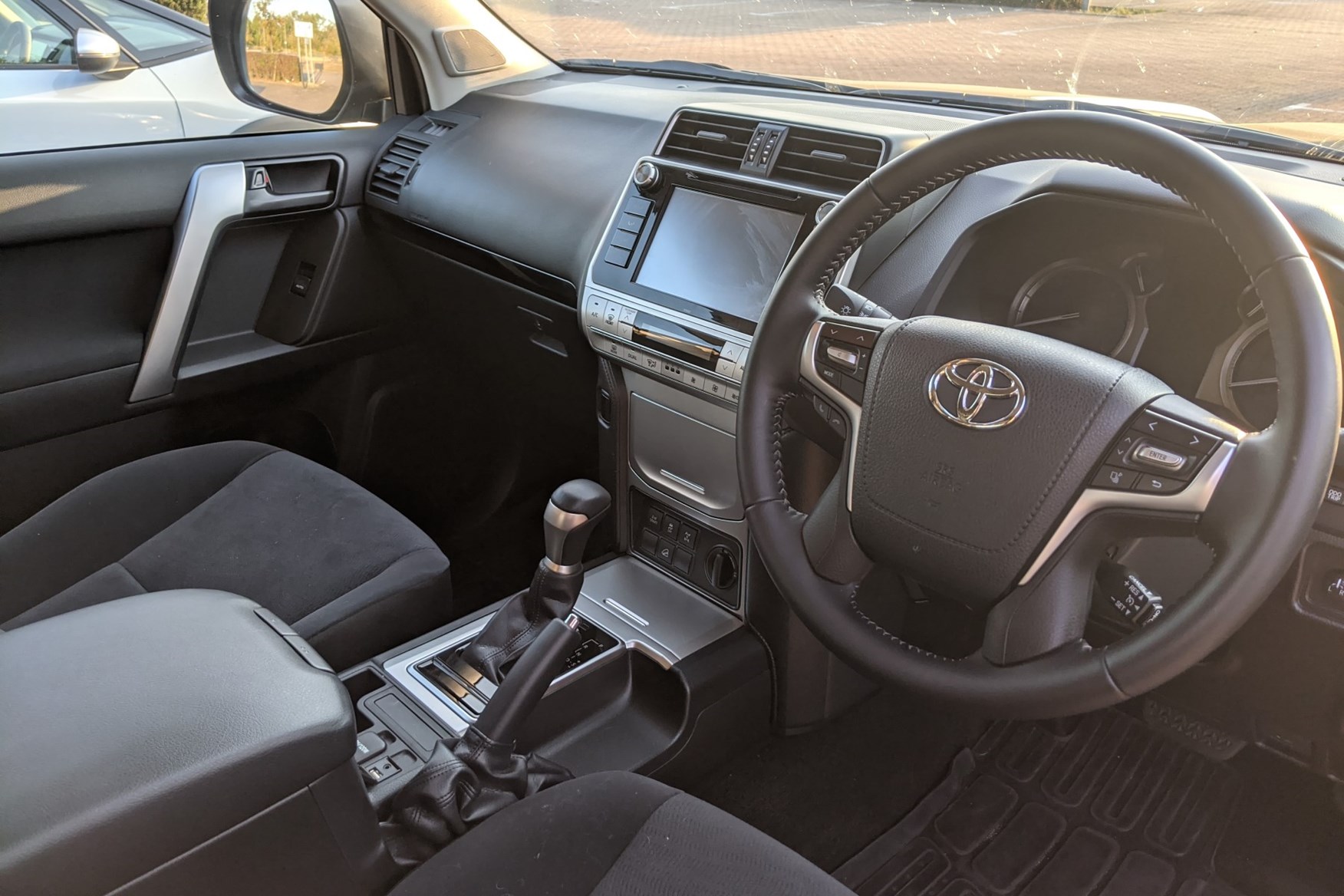
Beneath thick rubber mats there's a fully carpeted floor, and on five-door models the controls for the rear electric windows are still present – though the panels, blacked-out with body-colour, don't move. Even the full-length centre console is unchanged from the passenger car's, with a rear heating outlet connected. Ideal for keeping your cargo toasty.
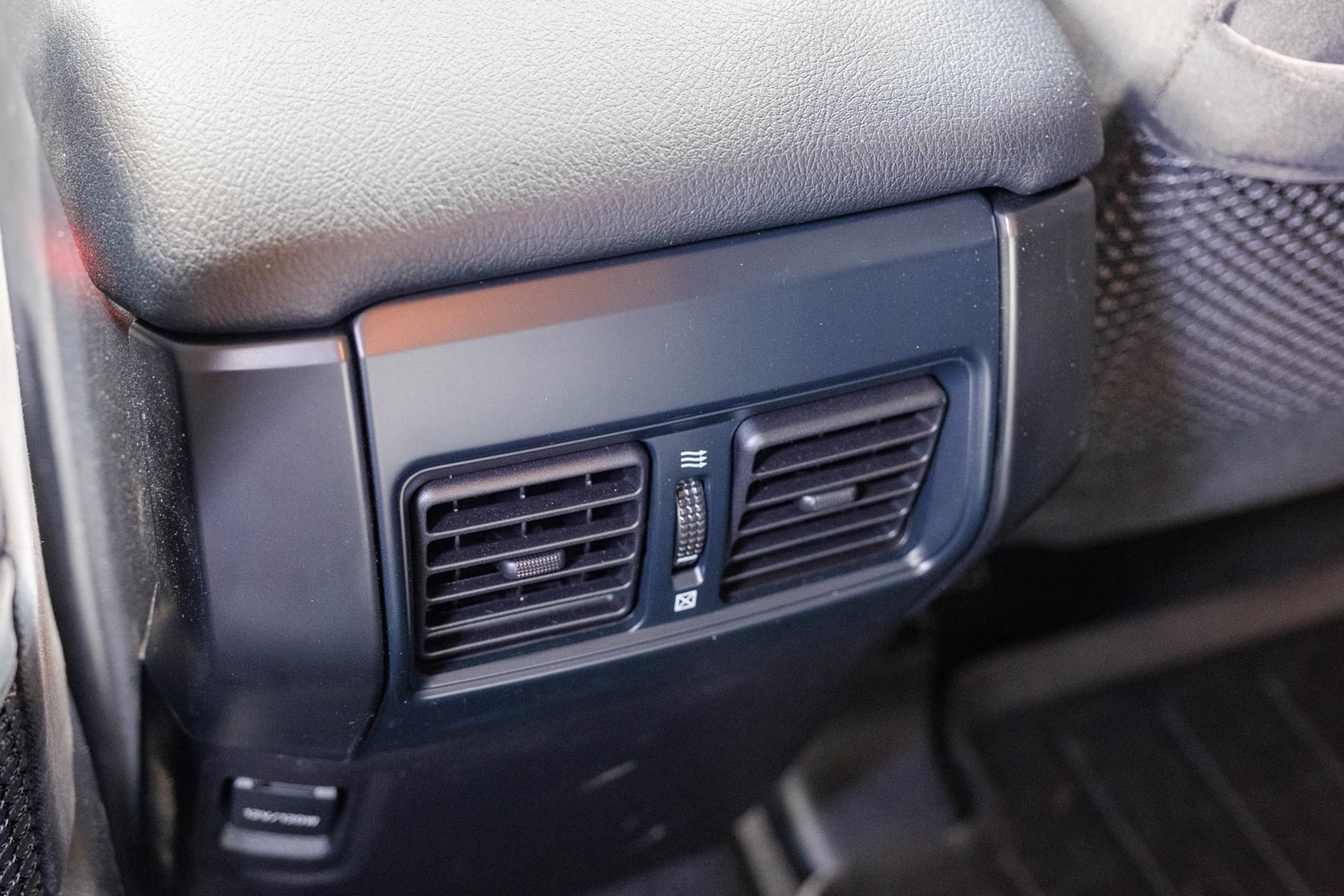
Strong handles aid access to the seats, rather useful given the lack of side steps, and once aboard you'll struggle to find a single disappointing grade of plastic, unexpected sharp edge or flimsy mechanism. It's a masterpiece of functionality in hardwearing materials, with nothing thrown in for the sake of it.

Visibility is good, for a vehicle competing with vans – the rear view mirror is large, like the door mirrors, and you can open half of the bulkhead mesh for an unobstructed view on the passenger side; the translucent nature of the covered windows allows visibility of lights over the shoulder, too, for keeping an eye on blind spots.
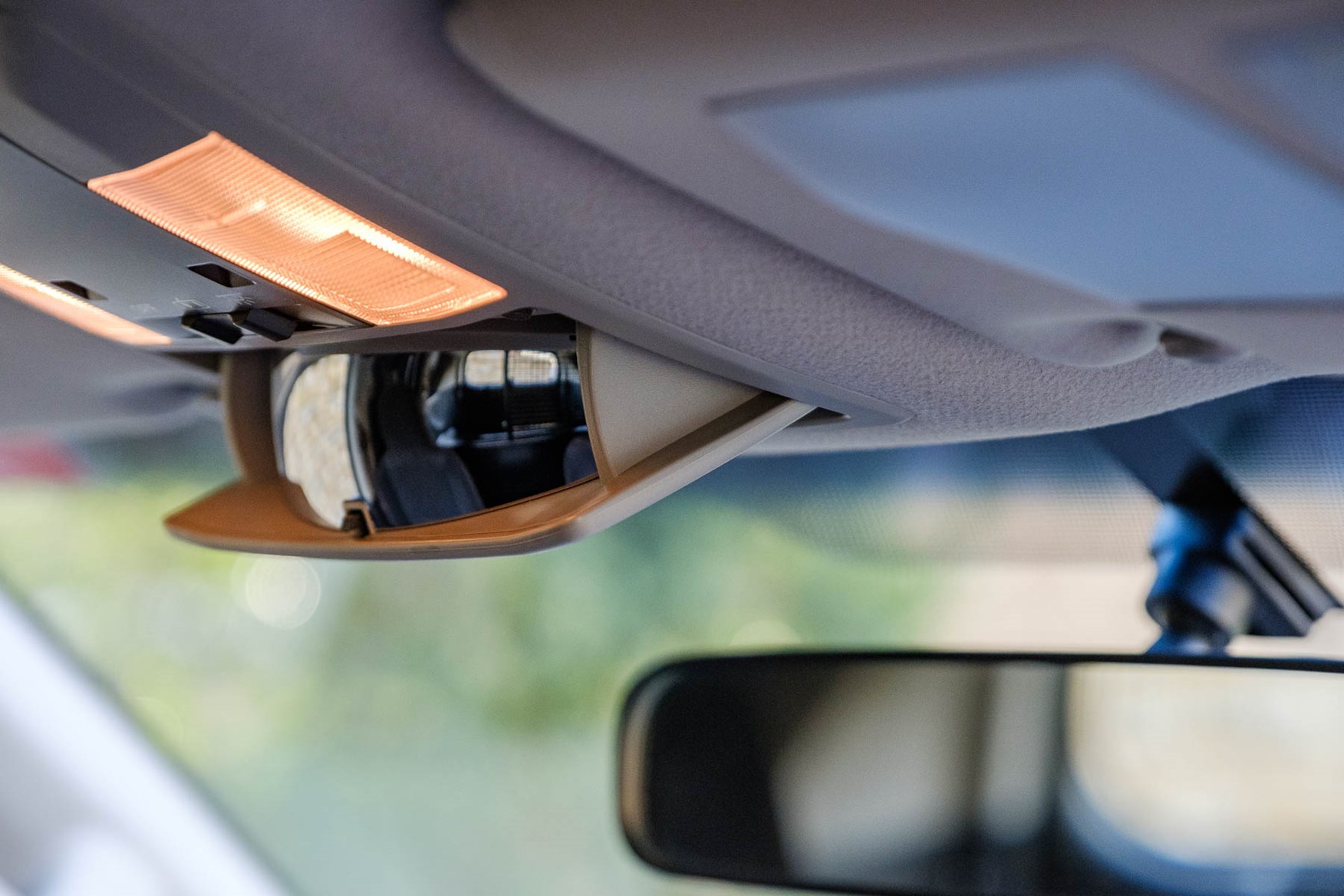
There's also a pop-out conversation mirror in the roof that provides a wide-angle view of the load area. You will rely on those large door mirrors, though, as there are no reversing aids as standard on the Utility specification. Active models get rear parking sensors and a reversing camera, however.
Land Cruiser Commercial in the space race
Trimming-out the rear, the seats are gone and a metal bulkhead with upper grille is installed, anchored to the grab handle locations in the roof – nothing on the commercial vehicle preparation looks to have required modifications to the body structure, but it's all very solid. All the rear trim retains slots for seatbelts and other passenger accessories. Where the seat base and load floor would be is now a tough boarded floor with a grippy surface, finished with aluminium strip edging.
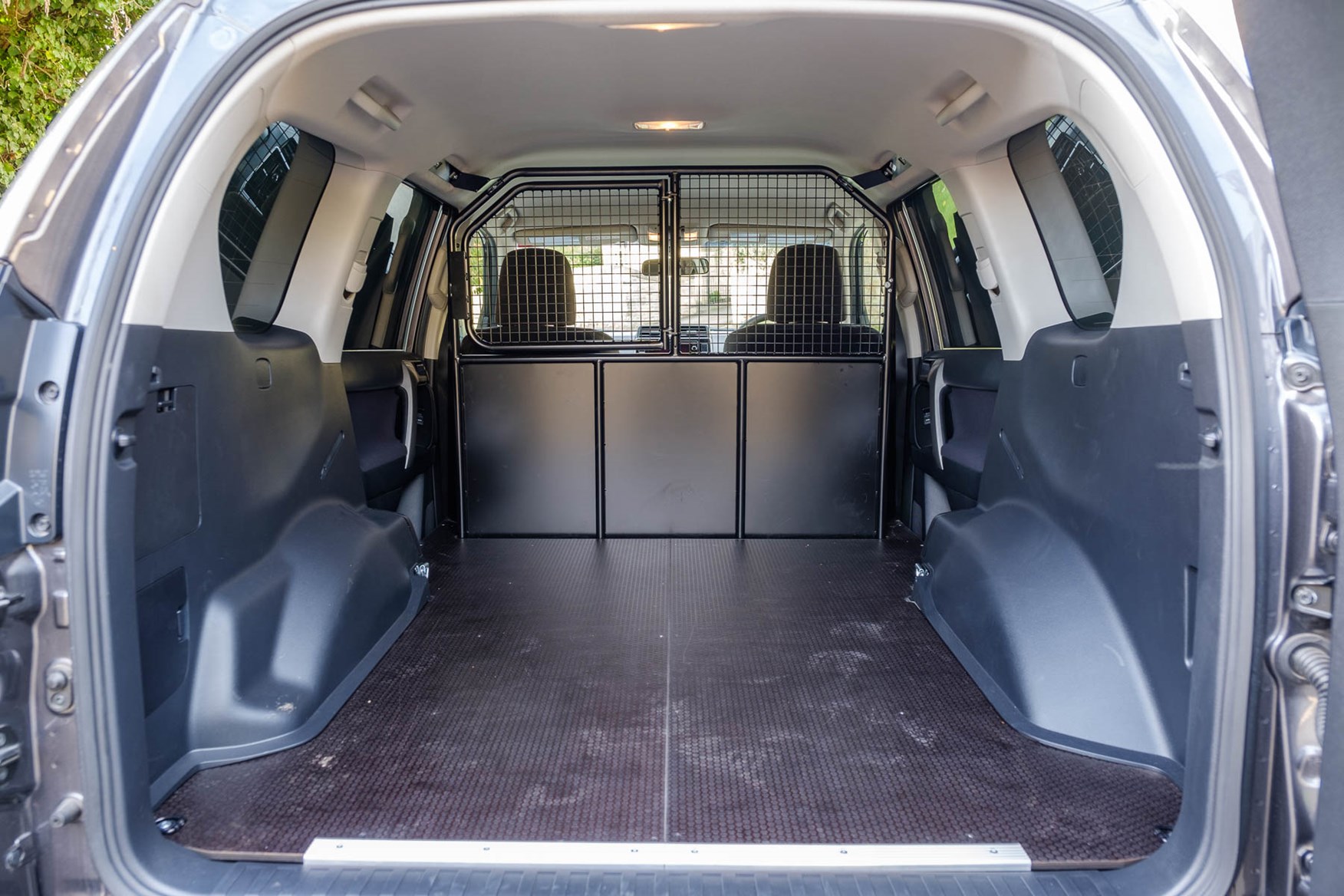
It's a good start point for a bespoke conversion, particularly given the functional rear side doors on the LWB. Both versions also retain the glass hatchback on the tailgate, operated from the keyfob – so longer loads could be carried (appropriately secured) or an easy-access set of tools located behind the window.
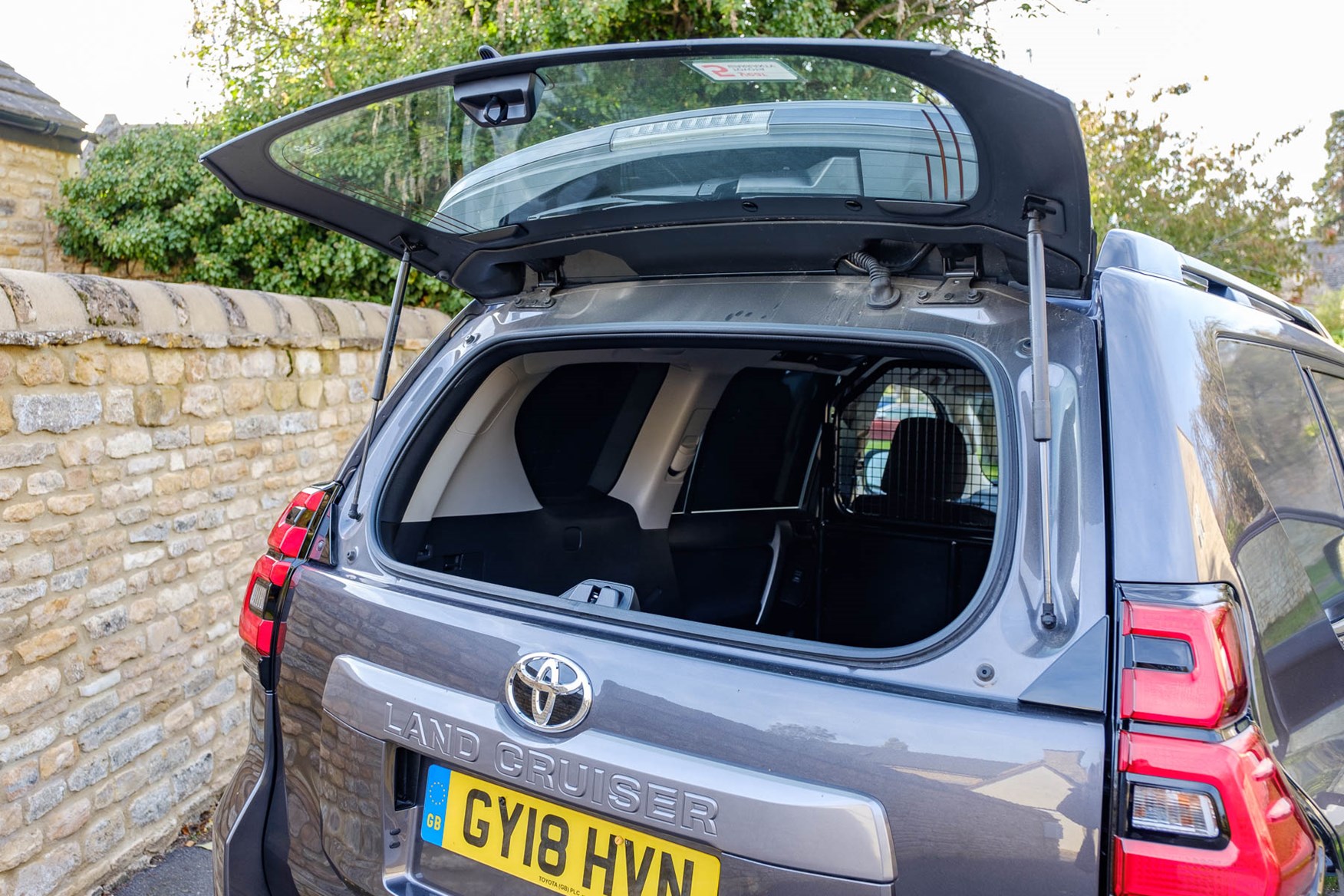
Access to the rear from the front is also possible through a magnetically latched mesh door in the upper part of the bulkhead. This will secure itself in the open position, too.
Double DIN, no DAB
Perhaps the most surprising aspect of the Land Cruiser Utility Commercial is the radio. Occupying a classic double-DIN space, and connected to six speakers, it has a CD slot, Bluetooth, USB connectivity, aux-in and FM/AM/LW radio but no DAB – which we find extraordinary for a vehicle launched in 2018.
No wonder Toyota's customers soon began asking for a better-specced version, which led to the introduction of the Active grade in 2020.
This gets Toyota’s Touch 2 infotainment system complete with 8-inch touchscreen and DAB radio. The latest models even feature Apple CarPlay and Android Auto, which is sorely overdue and gives access to all manner of navigation and media apps – useful, as the standard interface is a bit fiddly. Sound quality is surprisingly good considering the Land Cruiser’s rough-and-tumble roots.
Still, regular radio reception in the Utility model is good and it can pick up signals from remote AM stations, perfect for that 'lost in a foreign nation' ambience, but no Absolute 80s? Hands-free over Bluetooth is refreshingly clear and stable, fortunately. Given the ability to stream from your smartphone, there's no reason the lack of DAB should be a problem; but as it's a standard size of unit upgrading to a third-party system is relatively straightforward.
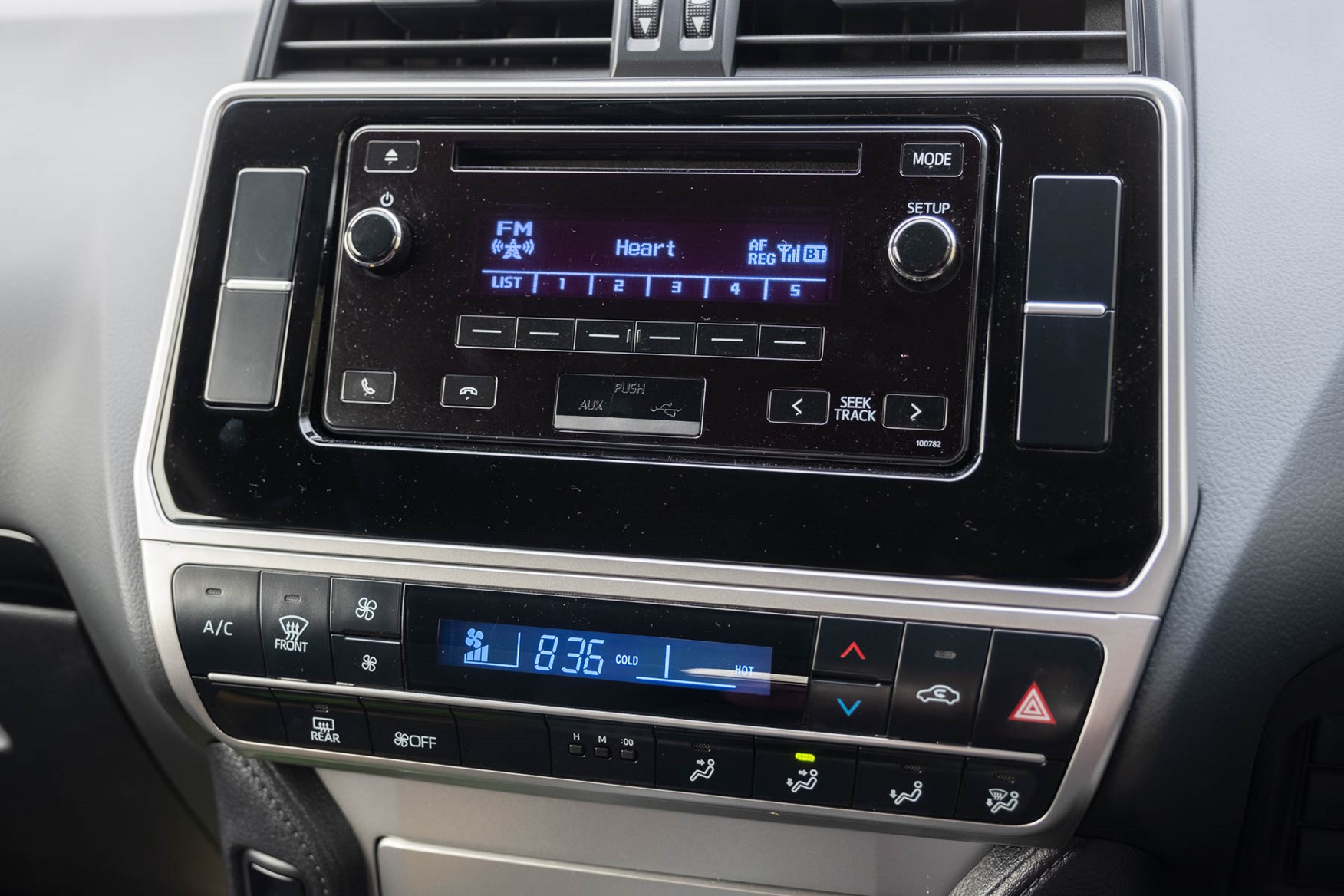
Below the radio is a digital heater control panel (with dual-zone temperature controls on the LWB; the SWB has manual air-conditioning with a simple hot/cold scale) and the traditional blue-LED Toyota digital clock. Ventilation is, as you'd expect, excellent despite the lack of climate control. Active models add automatic air-conditioning, but nothing more.
- Mid-30s mpg realistically possible
- Short service intervals and reasonable costs
- Up to 10 years of warranty coverage
Despite the legendary quality and status of the Toyota Land Cruiser, the Utility Commercial is surprisingly reasonable in terms of cost. Yes, there's a lot of kit stripped out – but this is a case of quality over quantity.
The Land Cruiser Active Commercial puts some of this kit back in, but still comes in at a reasonable rate for the type of vehicle you're getting in exchange. Even if it does look expensive compared with some pickups.
Toyota Land Cruiser Commercial fuel economy
Claimed fuel economy from the Land Cruiser's 177hp 2.8-litre engine with the manual gearbox is 29.4mpg; real world driving on-road and unladen can come very close, without any effort to drive economically. Sustained motorway cruising in sixth gear is relaxed and efficient.
Naturally more extreme applications - towing, full payload or off-roading - will reduce economy. The automatic gearbox included with Active models, unusually, improves fuel economy and SWB varients achieve figures as high as 31mpg.
Toyota Land Cruiser Commercial warranty info
Until 1 June 2021, all Toyotas came with a five-year, 100,000 mile warranty with no mileage limitation in the first year - including the Land Cruiser Commercial.
After this point, the company introduced the new Toyota Relax warranty scheme, which is three years / 60,000 miles at its basic level but up to 10 years / 100,000 miles as long as you keep getting the vehicle serviced by Toyota.
Full details about this change can be found on our Toyota Relax warranty explainer page.
Bodywork comes under Toyota's 12 year anti-perforation warranty, which is transferable to future owners.
Paintwork and surface rust is covered by a three-year unlimited mileage warranty.
Toyota Land Cruiser Commercial service intervals
Service intervals for the Land Cruiser are set at 10,000 miles or 12 months.
Those are short intervals by commercial vehicle standards these days, but given the quality of the Land Cruiser's engineering, pricing for such servicing is quite reasonable.
What's more, for vehicles over five years old, Toyota offers reduced servicing rates
Consumables are generally competitive direct from Toyota as well, making a Land Cruiser a sensible long-term proposition.
Land Cruiser Utility Commercial tax info
VED and BIK are the same as any other commercial vehicle, which does mean there are cases where the regular Land Cruiser Utility passenger car could be cheaper – particularly as the reasonably low on-the-road price of a Land Cruiser Utility includes a punitive first year rate that vans are not subject to.
BIK is a different story, with a flat commercial vehicle rate and generous personal mileage allowances.
Finally, for businesses purchasing or leasing a Land Cruiser Utility Commercial, there may be the option to write down 100% as capital allowance for plant within annual investment allowance limits, or an 18% write down as well as reclaimable VAT.
>> Light commercial vehicle tax explained
Toyota Land Cruiser Commercial standard equipment
At launch in 2018 there was only the Utility grade available, and the clue is in the name – you get the basics, and nothing more. But they're very well-made basics.
A fancier Active grade was added to the range in early 2020.
Land Cruiser Utility Commercial standard equipment highlights:
- Six-speed manual transmission
- LED front and rear daytime running lights
- Automatic headlights
- Front fog lights
- Full-size spare wheel
- Heated, power-adjusted door mirrors
- Remote opening glass tailgate
- Manual air-conditioning; dual-zone on the LWB model
- Keyless entry and start
- Six-speaker radio/CD with Bluetooth
- Cruise control with speed limiter
- Height adjustable driver's seat with lumbar support
- 17-inch steel wheels
Toyota Land Cruiser Active Commercial standard equipment highlights (in addition to Utility):
- Six-speed automatic transmission
- 8.0-inch Toyota Touch 2 infotainment system with DAB radio, Apple CarPlay, Android Auto and nine speakers
- Reversing camera
- Rear parking sensors
- Automatic dual-zone air-conditioning
- Bodycoloured door mirrors and door handles
- 17-inch alloy wheels
Toyota offers very few options for the Land Cruiser Commercial, with an accessories range limited to towing and body protection.
For details of safety equipment see the Safety and Security section of this review.
- Should prove super-tough
- Toyota offers legendarily good dealer and customer service
Nothing to report. The engine is a new design, so problems with age and high mileage have yet to surface – otherwise, this is simply one of the most reliable commercial vehicles you can buy.
- No active safety equipment
- But lots of airbags
- Alarm as standard
Occupant protection is excellent for a commercial vehicle thanks to lots of airbags.
Toyota Land Cruiser Commercial safety equipment
The Land Cruiser Commercial is somewhat stripped out compared with passenger versions, but even the Utility model still comes with:
- Seven airbags
- Brake assist
- Tyre pressure monitors
- Dynamic stability control (electronic stability control, or ESC)
- Trailer stability assist (LWB model only)
Active models add to this with:
- Hill-start assist
- Downhill assist control (hill descent control)
- Reversing camera
- Rear parking sensors
Toyota Land Cruiser Commercial security
An alarm and immobilizer package is standard on the Land Cruiser, including glass breakage detection and tilt detection.
This conversion doesn't scream commercial vehicle at passers-by, so there's a reduced risk of thieves expecting to find tools inside – but you may want to change the body colour panels that replace the glass for ones that look more like tinted windows.
Which Toyota Land Cruiser (18-23) is best for me?
Unless you have a good reason to take the shorter vehicle, such as restricted covered parking or very tight turns, the superior ride quality and cargo capacity of the Land Cruiser Utility Commercial LWB make it the obvious one to have.
However, the SWB model is more nimble, feels surprisingly rapid, and should prove agile off-road. So don't dismiss it entirely out of hand.
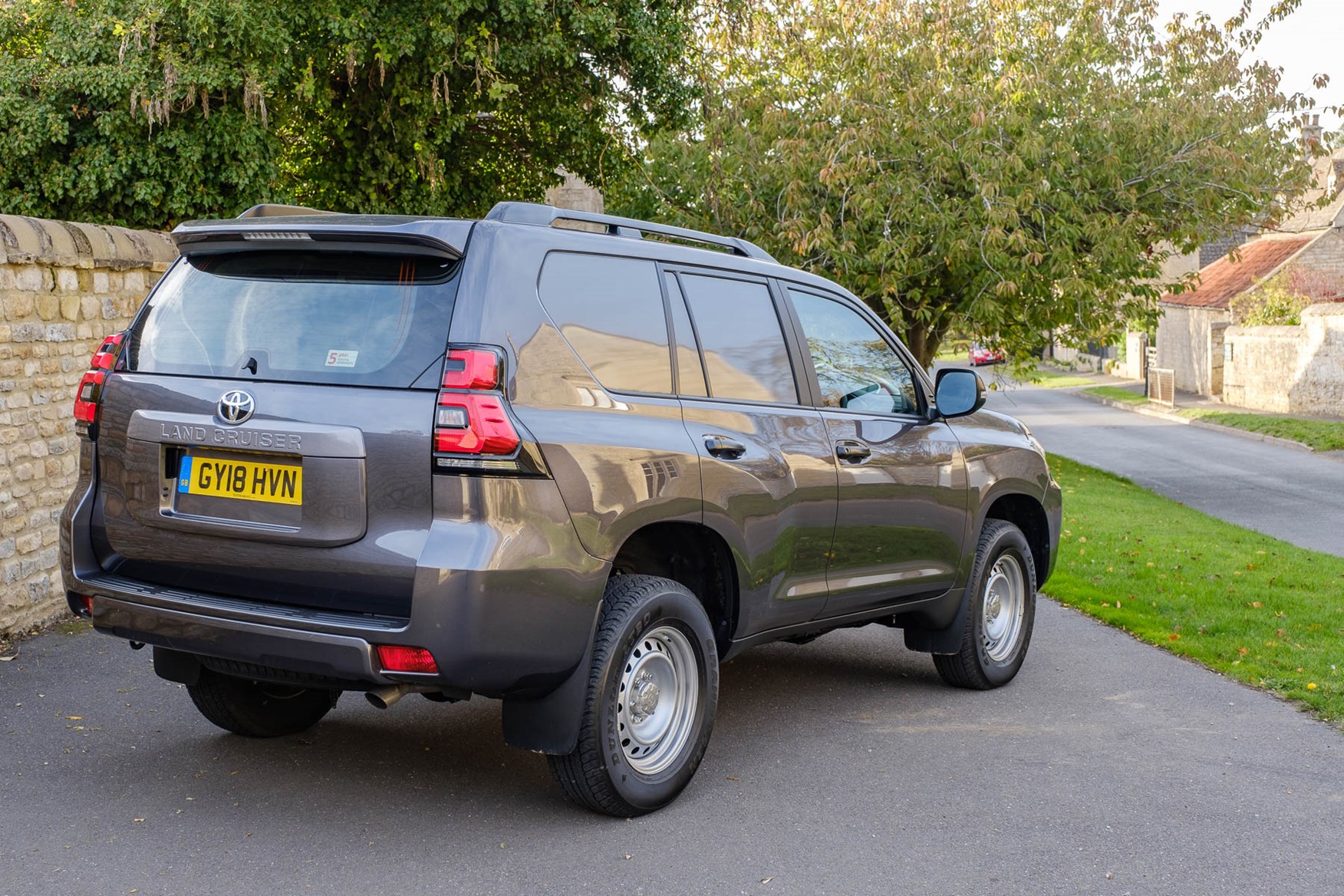
As for trim level, it’s rather dependent on whether you’d like an automatic gearbox or not, as it’s irrecovably linked to the Active grade. For our money, we’d really consider saving the cash and going for a Utility model – that manual gearbox is so pleasant to use, and a good-quality phone mount will easily make up for its dearth of infotainment.
The Active does have some useful additional extras though, whether it’s the body-coloured exterior trim and alloy wheels making it look less tempting to thieves than a van, or the hill-descent control and hill-start assist making off-roading just that touch easier.



